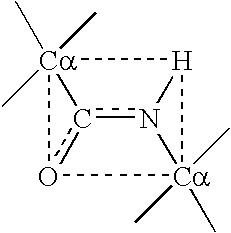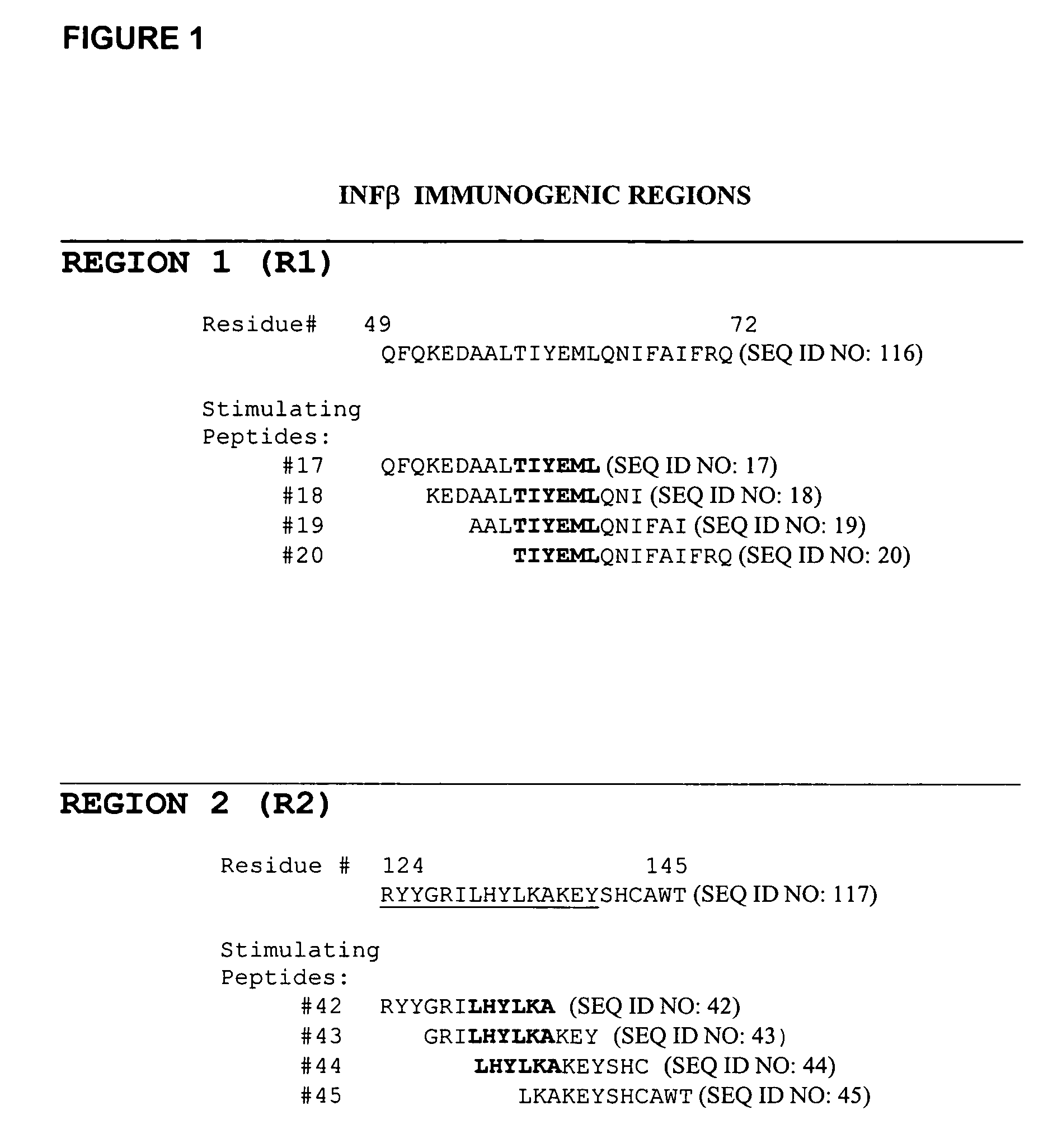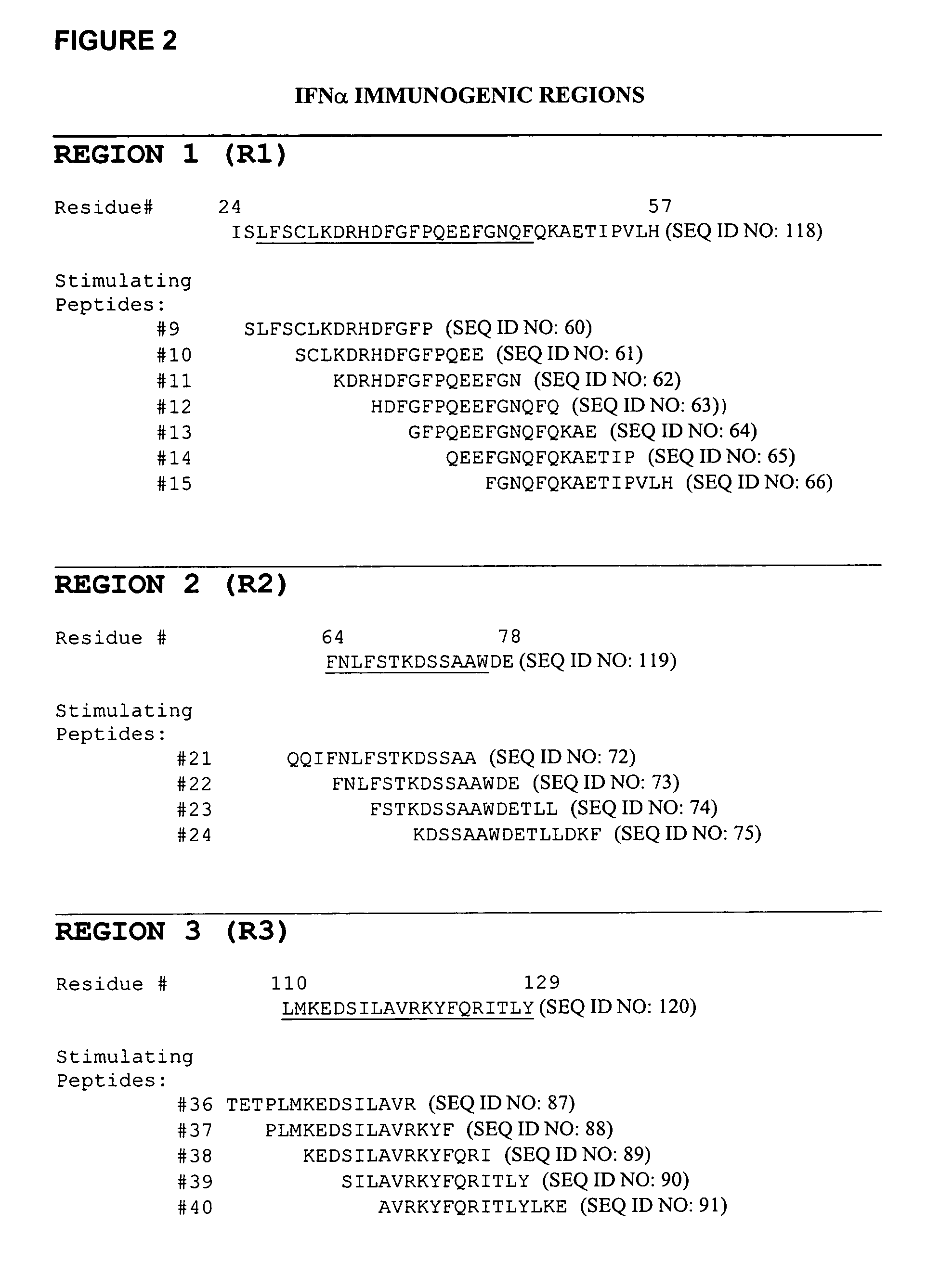Method for mapping and eliminating T cell epitopes
a technology of t cell epitopes and mapping methods, applied in the field of immunology, can solve the problems of reducing immunogenicity, affecting the efficacy of therapy, and reducing immunogenicity, so as to reduce immunogenicity, reduce immunogenicity, and high immunogenicity
- Summary
- Abstract
- Description
- Claims
- Application Information
AI Technical Summary
Problems solved by technology
Method used
Image
Examples
example 1
[0081] The interaction between MHC, peptide and T cell receptor (TCR) provides the structural basis for the antigen specificity of T cell recognition. T cell proliferation assays test the binding of peptides to MHC and the recognition of MHC / peptide complexes by the TCR. In vitro T cell proliferation assays of the present example, involve the stimulation of peripheral blood mononuclear cells (PBMCs), containing antigen presenting cells (APCs) and T cells. Stimulation is conducted in vitro using synthetic peptide antigens, and in some experiments whole protein antigen. Stimulated T cell proliferation preferably is measured using 3H-thymidine (3H-Thy) and the presence of incorporated 3H-Thy assessed using scintillation counting of washed fixed cells.
[0082] Buffy coats from human blood stored for less than 12 hours were obtained from the National Blood Service (Addenbrooks Hospital, Cambridge, UK). Ficoll-paque was obtained from Amersham Pharmacia Biotech (Amersham, UK). Serum free AI...
example 2
[0088] An epitope map for the human protein interferon α2 (IFNα) was derived using the method of EXAMPLE 1. In all respects the method was as per EXAMPLE 1 except that synthetic peptides were as given in Table 2 (below) and incubation with the PBMC preparations was at a concentration of 10 μM.
[0089] Mapping T cell epitopes in the IFNα sequence resulted in the initial, preliminary identification of three immunogenic regions R1, R2, R3. This was determined by T cell proliferation to seven, four and five overlapping peptides respectively as shown in FIG. 2. Region 3 is considered to contain a potential immunodominant T cell epitope as proliferation is scored in two thirds of donors that responded to IFNα peptides.
TABLE 2IFNα peptidesPeptideIDIFNα2b; 15merSEQ IDNumbersequenceNO:1CDLPQTHSLGSRRTL522PQTHSLGSRRTLMLL533HSLGSRRTLMLLAQM544GSRRTLMLLAQMRRI555RTLMLLAQMRRISLF566MLLAQMRRISLFSCL577AQMRRISLFSCLKDR588RRISLFSCLKDRHDF599SLFSCLKDRHDFGFP6010SCLKDRHDFGFPQEE6111KDRHDFGFPQEEFGN6212HDFGFPQ...
example 3
Protocol for Conducting a Time Course T Cell Activation Assay
[0090] A general protocol for conducting a time course T cell activation assay comprises the following steps: [0091] 1. Thaw 1 vial of PBMC per donor [0092] 2. Resuspend cells at 2-4×106 cells / ml (in AIM V). [0093] 3. Transfer 1 ml to 3 wells of a 24 well plate (giving a final concentration of 2-4×106 PBMC / well), since it is usual to test the antigen at two different concentrations and compare against a non-antigen treated control (e.g. 10-50 μg / ml protein or 1-5 μM peptide). [0094] 4. Make stock solutions of antigens typically 100 μg / ml for proteins and 2-10 μM for peptides. Add 1 ml of antigen to each well to give a final concentration 10-50 μg / ml protein or 1-5 μM peptide. [0095] 5. Incubate for 5 days. [0096] 6. Gently resuspend the cells in the 2 ml cultures by pipetting and from each condition remove 100 μl cells and place into a well of 96 well plate (round bottom), repeat this three time of reach culture conditio...
PUM
| Property | Measurement | Unit |
|---|---|---|
| concentration | aaaaa | aaaaa |
| volume | aaaaa | aaaaa |
| concentration | aaaaa | aaaaa |
Abstract
Description
Claims
Application Information
 Login to View More
Login to View More - R&D
- Intellectual Property
- Life Sciences
- Materials
- Tech Scout
- Unparalleled Data Quality
- Higher Quality Content
- 60% Fewer Hallucinations
Browse by: Latest US Patents, China's latest patents, Technical Efficacy Thesaurus, Application Domain, Technology Topic, Popular Technical Reports.
© 2025 PatSnap. All rights reserved.Legal|Privacy policy|Modern Slavery Act Transparency Statement|Sitemap|About US| Contact US: help@patsnap.com



